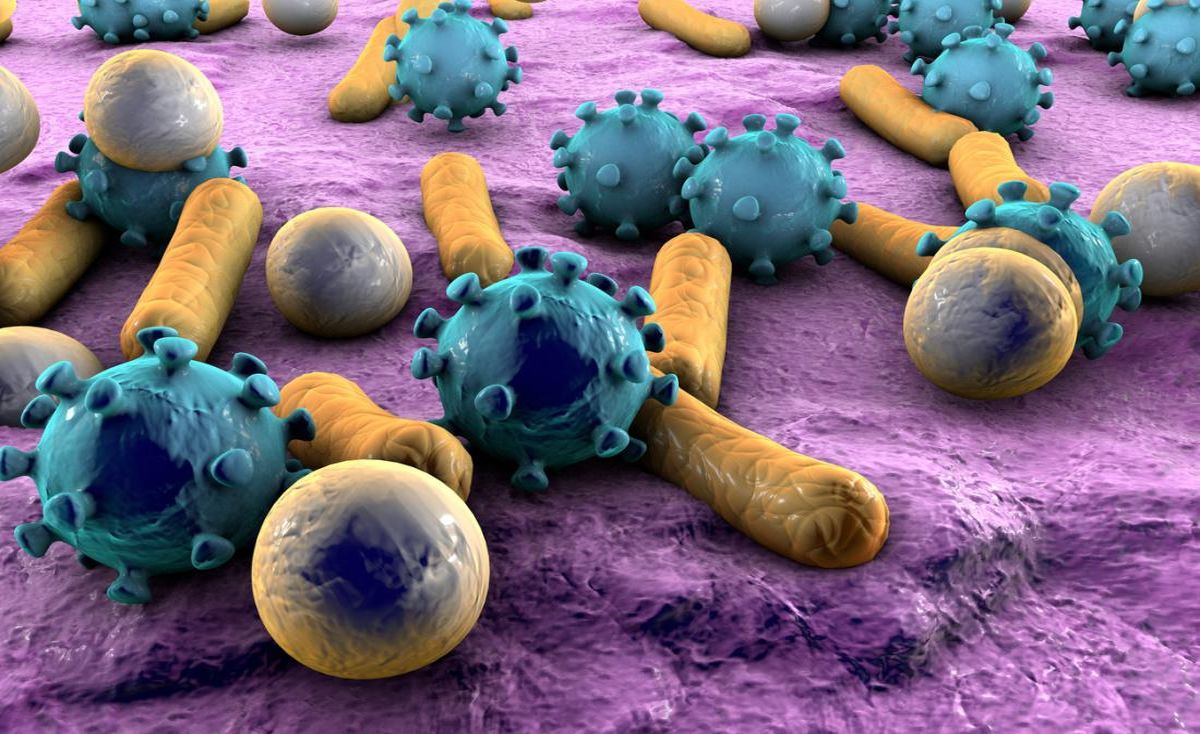
Microbes are tiny organisms that play huge roles in our world. From the air we breathe to the food we eat, these microscopic beings are everywhere. But what exactly are microbes? Microbes include bacteria, viruses, fungi, and protozoa. They can be found in the most extreme environments, from boiling hot springs to the icy depths of the Antarctic. Some microbes are beneficial, helping us digest food or produce vitamins, while others can cause diseases. Did you know that there are more microbial cells in your body than human cells? It's true! These fascinating facts about microbes will change how you see the world around you. Ready to learn more? Let's dive into the amazing world of microbes!
Microbes: The Invisible World
Microbes are tiny organisms that play a huge role in our lives. They are everywhere, from the deepest oceans to the highest mountains. Let's dive into some fascinating facts about these microscopic marvels.
- Microbes are the oldest form of life on Earth, existing for about 3.5 billion years.
- A single gram of soil can contain up to 40 million bacterial cells.
- The human body hosts around 100 trillion microbial cells, outnumbering human cells by 10 to 1.
- Microbes can survive extreme conditions, such as boiling water, freezing temperatures, and high radiation levels.
- Some bacteria can produce their own light, a phenomenon known as bioluminescence.
Microbes and Human Health
Microbes play a crucial role in human health, both positively and negatively. They help us digest food, produce vitamins, and protect against harmful pathogens.
- The gut microbiome, consisting of trillions of microbes, is essential for digestion and immune function.
- Probiotics are live bacteria that can provide health benefits when consumed in adequate amounts.
- Antibiotics can kill harmful bacteria but also disrupt the balance of beneficial microbes in the body.
- Some microbes can cause diseases, such as tuberculosis, cholera, and the flu.
- The human skin is home to about 1,000 different species of bacteria.
Microbes in the Environment
Microbes are vital for maintaining the balance of ecosystems. They decompose organic matter, recycle nutrients, and even help plants grow.
- Nitrogen-fixing bacteria convert atmospheric nitrogen into a form that plants can use.
- Microbes play a key role in the carbon cycle by breaking down dead plants and animals.
- Some bacteria can clean up oil spills by breaking down hydrocarbons.
- Cyanobacteria, also known as blue-green algae, produce oxygen through photosynthesis.
- Microbes in the ocean produce about half of the world's oxygen supply.
Microbes and Technology
Microbes have numerous applications in technology and industry. They are used in food production, medicine, and even bioengineering.
- Yeast, a type of fungus, is used in baking and brewing to ferment sugars.
- Penicillin, the first antibiotic, was discovered from the mold Penicillium notatum.
- Microbes can be engineered to produce biofuels, such as ethanol and biodiesel.
- Bacteria are used in bioremediation to clean up contaminated environments.
- Microbial enzymes are used in laundry detergents to break down stains.
Microbes and Space Exploration
Microbes are not just limited to Earth. Scientists are studying them to understand their potential in space exploration and the possibility of life on other planets.
- Some microbes can survive the harsh conditions of space, including extreme temperatures and radiation.
- Microbes are being studied for their potential to support life on Mars by producing oxygen and recycling waste.
- The International Space Station has its own microbiome, with microbes adapting to the unique environment.
- Scientists are exploring the use of microbes to produce food and medicine during long-term space missions.
- Microbes could help terraform other planets by altering their atmospheres and soil composition.
Fun and Surprising Microbe Facts
Microbes are full of surprises. Here are some fun and lesser-known facts about these tiny organisms.
- The largest bacterium, Thiomargarita namibiensis, can be seen with the naked eye and measures up to 0.75 mm in diameter.
- Some microbes can produce electricity, known as electrogenic bacteria, which could be used in bio-batteries.
The Microscopic World Awaits
Microbes, though tiny, play massive roles in our lives. From aiding digestion to producing oxygen, these microscopic organisms are essential. They can be found everywhere, from the deepest oceans to the highest mountains. Some microbes help us, while others can cause diseases. Understanding them better can lead to advancements in medicine, agriculture, and environmental conservation.
Next time you wash your hands or enjoy a slice of cheese, remember the unseen world of microbes working behind the scenes. They might be small, but their impact is enormous. Keep exploring and learning about these fascinating creatures. The more we know, the better we can harness their power for good.
Stay curious, and who knows what other incredible facts about microbes you'll uncover next? The microscopic world is full of surprises, just waiting to be discovered.
Was this page helpful?
Our commitment to delivering trustworthy and engaging content is at the heart of what we do. Each fact on our site is contributed by real users like you, bringing a wealth of diverse insights and information. To ensure the highest standards of accuracy and reliability, our dedicated editors meticulously review each submission. This process guarantees that the facts we share are not only fascinating but also credible. Trust in our commitment to quality and authenticity as you explore and learn with us.
